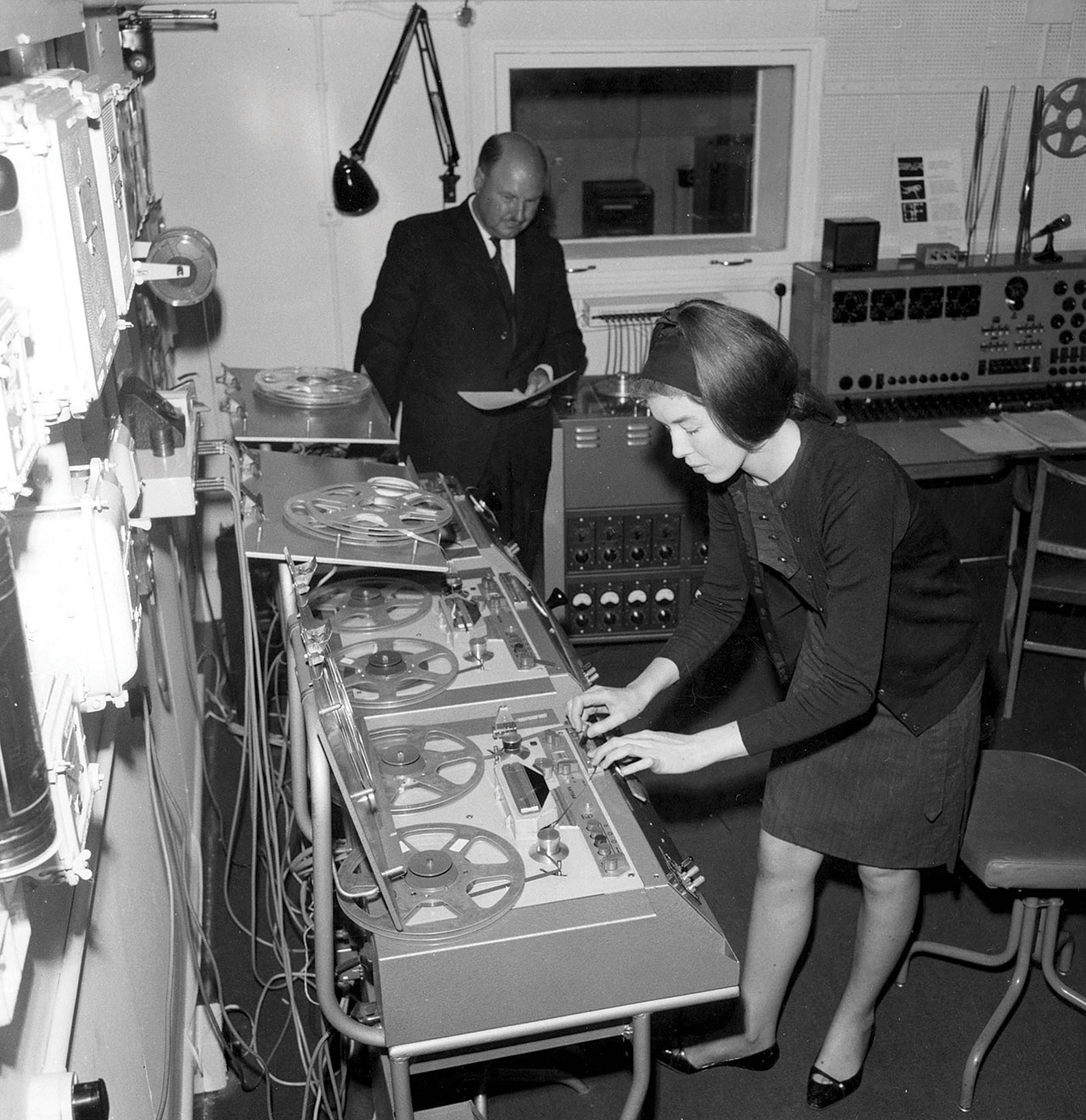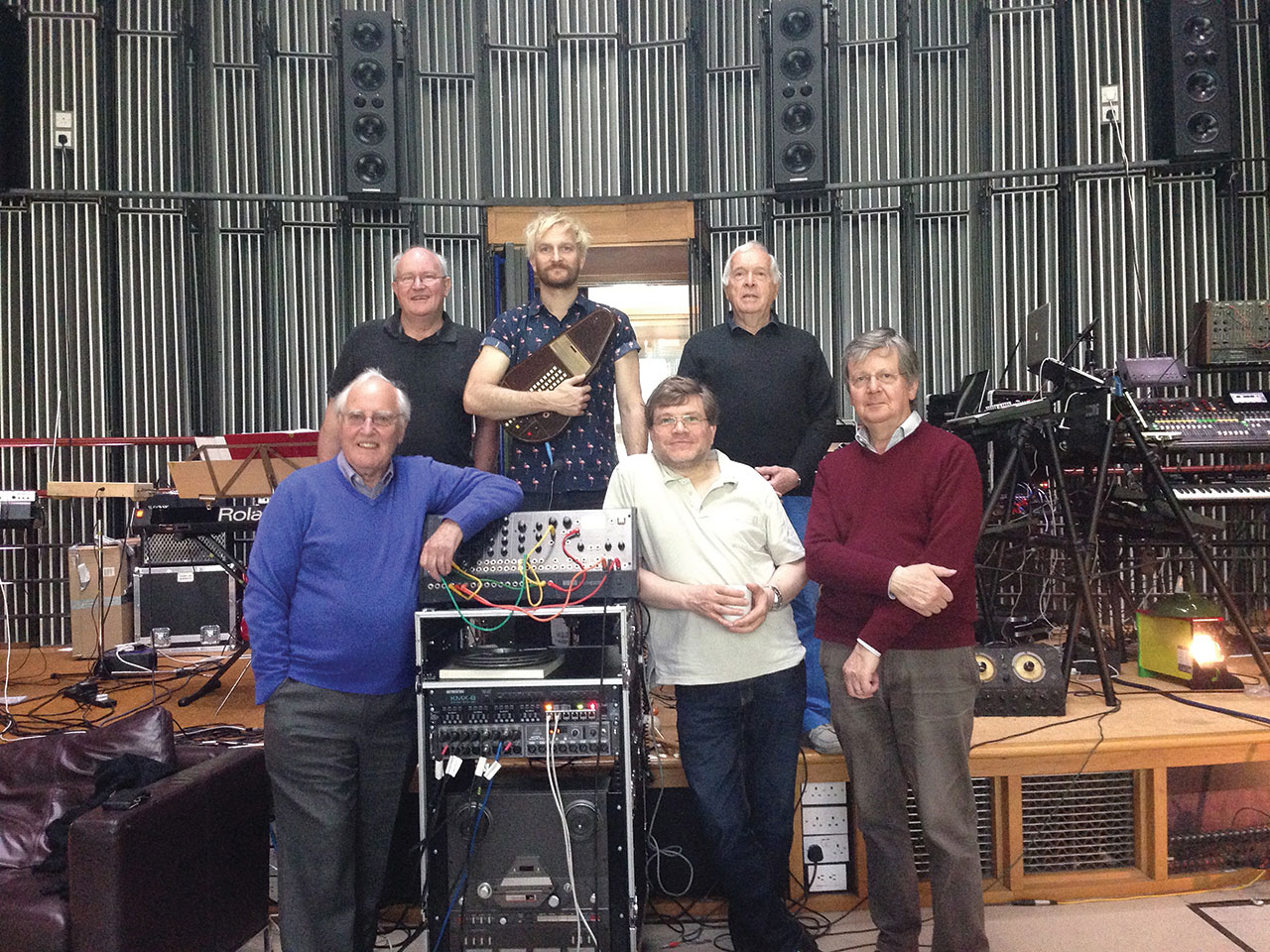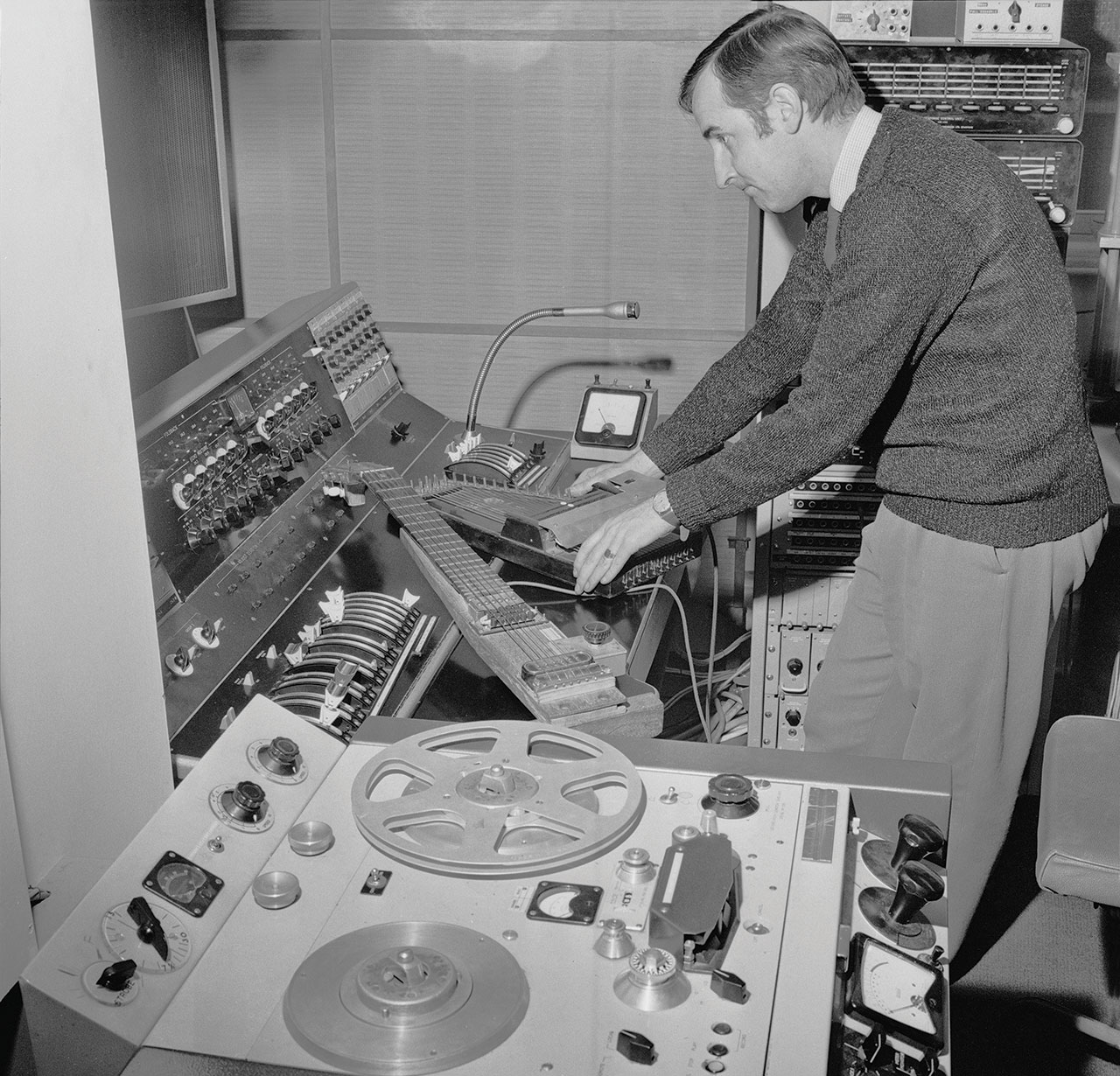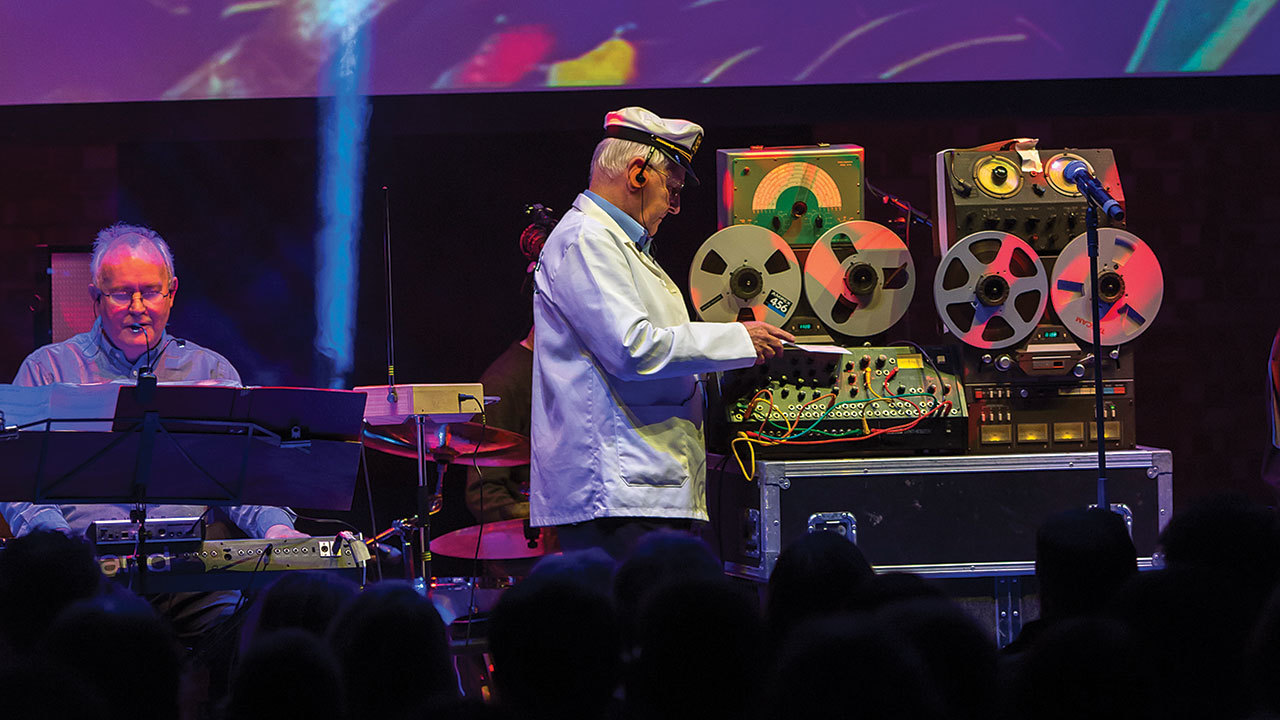Given its dedication to the advancement of sound, it’s ironic that the BBC Radiophonic Workshop took its cue from a piece of literature dating back centuries. On the wall of Room 13 at BBC’s Maida Vale Studios, its nerve centre of operations, hung a framed segment of Sir Francis Bacon’s New Atlantis, an unfinished novel written in 1624.
“We have also sound-houses, where we practise and demonstrate all sounds, and their generation,” it began, before offering a vision that promised “instruments of music likewise to you unknown” and “diverse tremblings and warblings of sounds”. Rediscovered by Daphne Oram when she co-founded the Workshop in 1958, the text was adopted as an operative manifesto by everyone who worked there.
Over the next 40 years, the BBC Radiophonic Workshop served as a nexus of experimental sound design, creating a vast and unique library of work that took electronica, musique concrète and tape manipulation into the outer reaches. The TV and radio shows for which they composed included Dr Who, The Hitchhiker’s Guide To The Galaxy, Quatermass And The Pit, The Hobbit, Chronicle, Horizon and Tomorrow’s World. There was also a huge range of commissions for schools and educational programmes.
This was cutting-edge daring, a secret group of technicians creating future sounds from banks of oscillators, tone generators, synthesisers and their own raw ingenuity.
“It was like being paid to have fun,” explains Paddy Kingsland, who joined in 1970. “The guy who ran the Workshop, Desmond Briscoe, gave us the freedom to do things with enough time and no awful pressure. Of course, he wanted to make sure that something good came out at the other end, so he wasn’t an easy touch. But we were getting results and he’d back you up. It was a marvellous working environment.”

As a measure of their influence on the populist music world, it’s instructive to note that Paul McCartney was a major fan, once visiting the Workshop’s most celebrated member – Delia Derbyshire, pioneering arranger of the Dr Who theme – to ask for an electronic backing for Yesterday.
Derbyshire was also on hand when Pink Floyd visited the studio in October 1967. Noting their interest in electronic music, she directed Floyd to Peter Zinovieff, her colleague in avant-garde group Unit Delta Plus, who in turn introduced them to the VCS3 synthesiser. The latter would become a key feature of The Dark Side Of The Moon, while Floyd sampled Derbyshire on One Of These Days.
“When I first started at the Workshop, there was Delia, John Baker, Brian Hodgson and David Cain,” Kingsland recalls. “They were working mainly with tapes then. John Baker, for instance, was doing jazzy tunes for Tomorrow’s World and those sorts of things, where he was a virtuoso at cutting up bits of tape in order to make a tune from something, like a bottle being uncorked. He was a wonderful musician, able to make that sound like real music rather than something mechanical.
“And Delia was using tape for textural and atmospheric pieces, and had a very sensitive handling of it. She was an eccentric. Delia took snuff, for instance, which was quite dramatic. She’d been highly educated at Cambridge, studying music, but at the same time she was trial-and-erroring as well. She seemed to have both skills, but liked to justify music in a very intellectual way, which was a very interesting approach.”
There was also a degree of crossover with the progressive wing of pop. Phil Manzanera has cited the Workshop as a major signpost for Roxy Music, particularly when it came to the VCS3 and its ability to distort and reshape the sounds of conventional instruments. “I used to be involved in a late night show on Radio One, called The Sequence,” says Kingsland. “They didn’t want a DJ talking, so they put all the records down onto a multitrack tape and then invited various guests to come in and busk links between the end of one track with the beginning of the next. I’d be there with my VCS3, a guitar or any old bits of gear, and Brian Eno used to come in and do them as a freelancer. Manfred Mann did it too, as did Bob Downes, who was a great jazz player. These amazing people would arrive and just busk.”
Among those who’ve acknowledged a debt to the Workshop are Mike Oldfield, Portishead, The Orb, Four Tet, Orbital, Hot Chip and Aphex Twin. And it’s a legacy that still endures. Similarly durable is the Workshop itself. When the BBC shut down the department in March 1998, a victim of Director General John Birt’s policy of closing down all services that weren’t cost-efficient, its days seemed over. But, minus the ‘BBC’ prefix, Radiophonic Workshop are once again a going concern.

Now comprising Kingsland, Peter Howell and Roger Limb (all of whose tenure dates back to the 70s), as well as original member Dick Mills and long-time associate/archivist Mark Ayres, the Workshop has been back on the agenda after a successful reunion gig at London’s Roundhouse in 2009. They’ve since gone on to play several major festivals. This activity has led to reissues of their most acclaimed work, and now to Burials In Several Earths, their first commercially available album for 32 years. It finds them joined by guests Martin Ware (The Human League/Heaven 17) and engineer Steve ‘Dub’ Jones, of Chemical Brothers fame.
“We’d recorded with Ghostpoet and Orbital before, and I went into both of those sessions with an idea,” Ayres explains. “But for this one nobody really had anything, so we just set the gear up and plugged in. I was noodling on the Roland modular, Martin Ware started noodling too and Paddy began strumming his guitar. We were all looking at each other with eyebrows raised and then suddenly something started happening. It literally went on from there; it was purely a case of improvising and seeing where it went. Then I took it all away and started shaping it.”
What emerges is a spontaneous dialogue between man and machine. In the best traditions of the avant-garde, Burials In Several Earths is both provocative and stimulating, a deeply experimental suite that startles, surprises and bamboozles. “We now live in an age where everything is possible in the studio, so we set absolute limits,” Ayres says. “We had analogue synthesisers, a piano, a guitar, theremin, autoharp: ‘This is what is in the room, this is what we’re going to use.’ And I think having those limitations is one of the things that really works with Burials…, because it has got rough edges.”
Fittingly, the themes and sensory philosophy also circle right back to New Atlantis and the Workshop’s fundamental credo. The titles for each improvised piece are taken from Bacon’s novel, which portrays a society in which technology and spiritual enlightenment dovetail in perfect harmony.
“It was only when mixing the album that I started to think about what we were going to call it,” says Ayres. “The second piece, Things Buried in Water, starts very serenely and then goes completely wacky. It suddenly sounded like a big disaster had happened. And then there’s all these watery noises afterwards, which sounds like a ship sinking. I had this picture in my mind of the Titanic and this horrible, peaceful silence as it sinks to the bottom of the ocean. And that became a picture for that piece. Then I thought, ‘This is all about exploring,’ and remembered the New Atlantis quote. It struck me as being such a Radiophonic title anyway. So it was reverse inspiration really, but it all fitted and slotted into place very naturally.”

Kingsland, meanwhile, explains that, “Radiophonic Workshop has always been about coming up with ideas, then leaving you to do the rest with your imagination. And that’s what Burials… is all about.”
For Ayres, who was tasked with archiving their entire catalogue when the BBC pulled the plug – three whole rooms stuffed with uncatalogued tapes, eventually consolidated down to “a mere 3,800 reels” – his involvement with the Workshop has been a labour of love. It’s also a natural extension of his lifelong fascination with the operation.
With the exception of 81-year-old Mills, his other bandmates were born in the immediate post-war years. Ayres, however, who worked on music for Dr Who in its Sylvester McCoy phase, is a child of the 60s, and is therefore in the core demographic for the Workshop’s most productive era.
He also sees the parallels between the Workshop and his other great passion: prog. “I think Radiophonic Workshop is up there with The Beatles in terms of importance,” he states. “Musically, it’s been a massive influence to anyone of my generation. We were brought up with this stuff and it’s become part of our DNA, part of the way we appreciate sound music. You heard Radiophonic Workshop on Blue Peter, or at school, because of Music, Movement And Mime. The way I experienced electronic music in my early teens, and before that, was entirely descriptive, like Dr Who or hearing a sound pretending to be a tree. So I learnt to take electronic music as a very descriptive art form, more than, say, the classic symphony. And that’s very much in line with prog, where you have things like The Six Wives Of Henry VIII, which was entirely inspired by something.
“Rick Wakeman was a massive influence and through him I discovered the sprawling, ostentatious, rather pretentious but utterly marvellous Yes albums. I loved how the language and the music and the words fitted together in a very impressionistic way.”

The similarities to prog are appreciated by Kingsland too, especially when he reflects on the breadth of possibilities that opened up to him and the others. “It was hard work, but it was all interesting and varied,” he says. “We used to do projects for schools, as well as mainstream programmes like The Hitchhiker’s Guide To The Galaxy. A lot of the educational stuff taught you how to do things for other purposes, with all sorts of effects. I did something called Inside The Body, imagining you’d shrunk down to the size of a blood cell and could go around the body to visit all sorts of places.”
Kingsland’s main claim to fame is his music for The Hitchhiker’s Guide To The Galaxy: “Douglas Adams had taken the idea for it to BBC producer Simon Brett, long before the book had come out. They made a pilot and Simon thought, ‘Paddy can do all that jiggery‑pokery.’ So he called me and asked if I could do some stuff for it.
“I think we did the End Of The World, a Vogon voice from the commander of the Vogon fleet that was going to destroy the Earth, and there was that little noise for the book. Then we went off to the pub and I remember Douglas saying, ‘I don’t know if they’re going to like it or not.’ Because in those days, the people running the comedy department weren’t very progressive. It was all sitcom-type stuff. But they saw it and commissioned the six episodes.
“Douglas was always late writing it,” adds Kingsland, “so it was always such a stressful thing and we’d be putting it all together frantically at the last minute. But it was a great experience.
“At the time, we thought the music we were making would just go out and be forgotten,” concludes Kingsland. “But people still remember those things we did and that the Workshop and electronic music was a different kind of sound. It wasn’t the same old orchestral stuff that had been used before – it was very new and thrilling and frightening. It lent itself to the imaginative backgrounds for things. And we happened to be the ones who were given the chance to do that. We were just very lucky to be in that particular place at that moment in time.”
Burials In Several Earths is out now on Room 13. See www.theradiophonicworkshop.co.uk for more information.
Radiophonic Workshop - Burials In Several Earths album review

